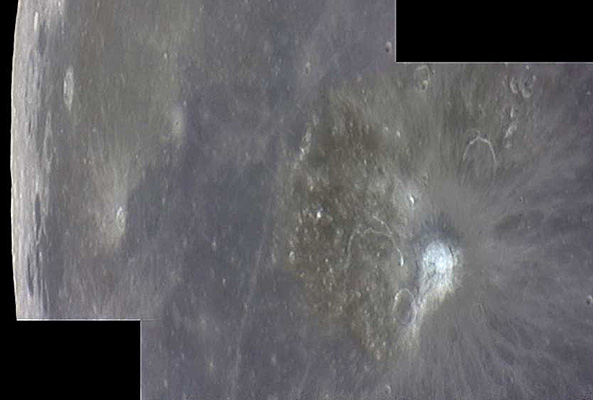January 3, 2004
Colorful Aristarchus Plateau
|
|
|
Colorful Aristarchus Plateau Do you ever see color when looking at the Moon? Few observers do, but sometimes, some parts of the surface seem to take on a delicate hue. I once observed a decidedly greenish-mustard coloration for the Aristarchus Plateau. And a similar color shows well on this remarkably colorful mosaic that Tom Williamson of Albuquerque acquired September 17, 2003. Tom used a Philips ToUcam Pro webcam with his homebuilt 203-mm f/7 newtonian and a Televue 2x barlow, giving about f/25. The coloration of this area is due to a 10-30 m thick veneer of glassy volcanic ash erupted from the Cobra Head, the small crater that is the source of Schroeter's Valley. Just east (right) of the Cobra Head is the 40-km wide impact crater Aristarchus. The impact that formed Aristarchus excavated thru the mare lavas to highland rocks below, which show here as the bright crater interior. The upper left portion of the image shows another region with a less intense greenish hue. This is an area of lava flows called the Telemann Unit of Oceanus Procellarum. Compared to the lavas that surround the Aristarchus Plateau, the Telemann lavas are brighter, poorer in titanium, and perhaps nearly a billion years younger (3.6 b.y vs 2.7 b.y.). And as Tom's picture shows, the Telemann lavas are greener! Related Links:
Text-based Information: Yesterday's LPOD: Cauchy Faults, Rilles and Domes Tomorrow's LPOD: Rising Moon |
Author & Editor:
Charles A. Wood
COMMENTS?
Register, Log in, and join in the comments.




